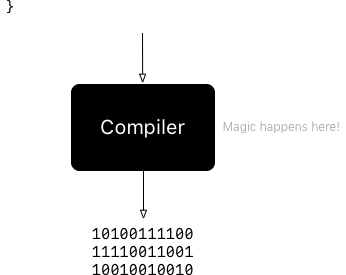 Sliding doors, Kan? Sanraku
Sliding doors, Kan? Sanraku
Welcome to the second article in the Let?s Build a Programming Language (LBPL) series. If you?re not familiar with the series, the purpose of LBPL is to take you from 0 to 1 in implementing a programming language.
This article gives a very high level overview of the structure of compilers and interpreters.
What is a compiler?
The simplest definition of a compiler is a program that translates code written in a high-level programming language (like JavaScript or Java) into low-level code (like Assembly) directly executable by the computer or another program such as a virtual machine.
For example, the Java compiler converts Java code to Java Bytecode executable by the JVM (Java Virtual Machine). Other examples are V8, the JavaScript engine from Google which converts JavaScript code to machine code or GCC which can convert code written in programming languages like C, C++, Objective-C, Go among others to native machine code.
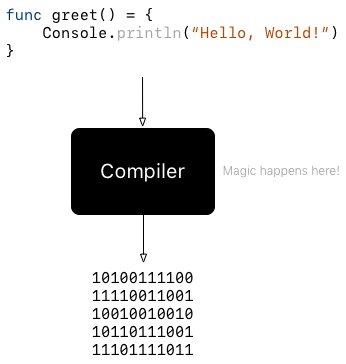
What?s in the black box?
So far we?ve looked at a compiler as a magic black box which contains some spell to convert high-level code to low-level code. Let?s open that box and see what?s inside.
A compiler can be divided into 2 parts.
- The first one generally called the front end scans the submitted source code for syntax errors, checks (and infers if necessary) the type of each declared variable and ensures that each variable is declared before use. If there is any error, it provides informative error messages to the user. It also maintains a data structure called symbol table which contains information about all the symbols found in the source code. Finally, if no error is detected, another data structure, an intermediate representation of the code, is built from the source code and passed as input to the second part.
- The second part, the back end uses the intermediate representation and the symbol table built by the front end to generate low-level code.
Both the front end and the back end perform their operations in a sequence of phases. Each phase generates a particular data structure from another data structure emitted by the phase before it.
The phases of the front end generally include lexical analysis, syntax analysis, semantic analysis and intermediate code generation while the back end includes optimization and code generation.
 Structure of a compiler
Structure of a compiler
Lexical Analysis
The first phase of the compiler is the lexical analysis. In this phase, the compiler breaks the submitted source code into meaningful elements called lexemes and generates a sequence of tokens from the lexemes.
A lexeme can be thought of as a uniquely identifiable string of characters in the source programming language, for example, keywords such as if, while or func, identifiers, strings, numbers, operators or single characters like (, ), . or :.
A token is an object describing a lexeme. Along with the value of the lexeme (the actual string of characters of the lexeme), it contains information such as its type (is it a keyword? an identifier? an operator? ?) and the position (line and/or column number) in the source code where it appears.
 Sequence of lexemes generated during lexical analysis
Sequence of lexemes generated during lexical analysis
If the compiler encounters a string of characters for which it cannot create a token, it will stop its execution by throwing an error; for example, if it encounters a malformed string or number or an invalid character (such as a non-ASCII character in Java).
Syntax Analysis
During syntax analysis, the compiler uses the sequence of tokens generated during the lexical analysis to generate a tree-like data structure called Abstract Syntax Tree, AST for short. The AST reflects the syntactic and logical structure of the program.
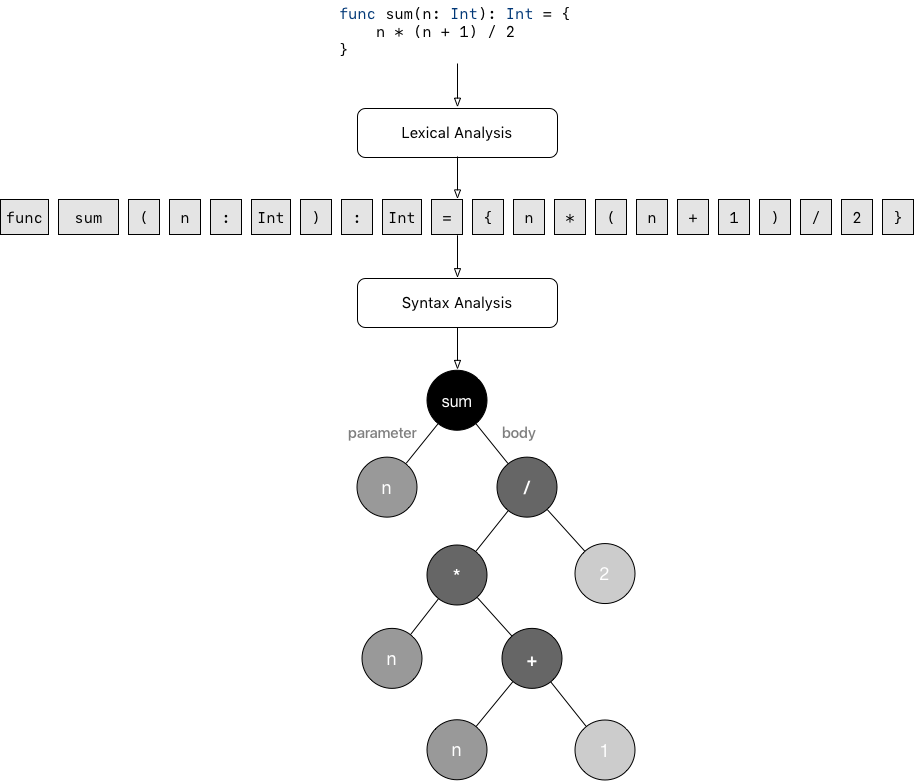 Abstract Syntax Tree generated after syntax analysis
Abstract Syntax Tree generated after syntax analysis
Syntax analysis is also the phase where eventual syntax errors are detected and reported to the user in the form of informative messages. For instance, in the example above, if we forget the closing brace } after the definition of the sum function, the compiler should return an error stating that there is a missing } and the error should point to the line and column where the } is missing.
If no error is found during this phase, the compiler moves to the semantic analysis phase.
Semantic Analysis
During semantic analysis, the compiler uses the AST generated during syntax analysis to check if the program is consistent with all the rules of the source programming language. Semantic analysis encompasses
- Type inference. If the programming language supports type inference, the compiler will try to infer the type of all untyped expressions in the program. If a type is successfully inferred, the compiler will annotate the corresponding node in the AST with the inferred type information.
- Type checking. Here, the compiler checks that all values being assigned to variables and all arguments involved in an operation have the correct type. For example, the compiler makes sure that no variable of type String is being assigned a Double value or that a value of type Bool is not passed to a function accepting a parameter of type Double or again that we?re not trying to divide a String by an Int, “Hello” / 2 (unless the language definition allows it).
- Symbol management. Along with performing type inference and type checking, the compiler maintains a data structure called symbol table which contains information about all the symbols (or names) encountered in the program. The compiler uses the symbol table to answer questions such as Is this variable declared before use?, Are there 2 variables with the same name in the same scope? What is the type of this variable? Is this variable available in the current scope? and many more.
The output of the semantic analysis phase is an annotated AST and the symbol table.
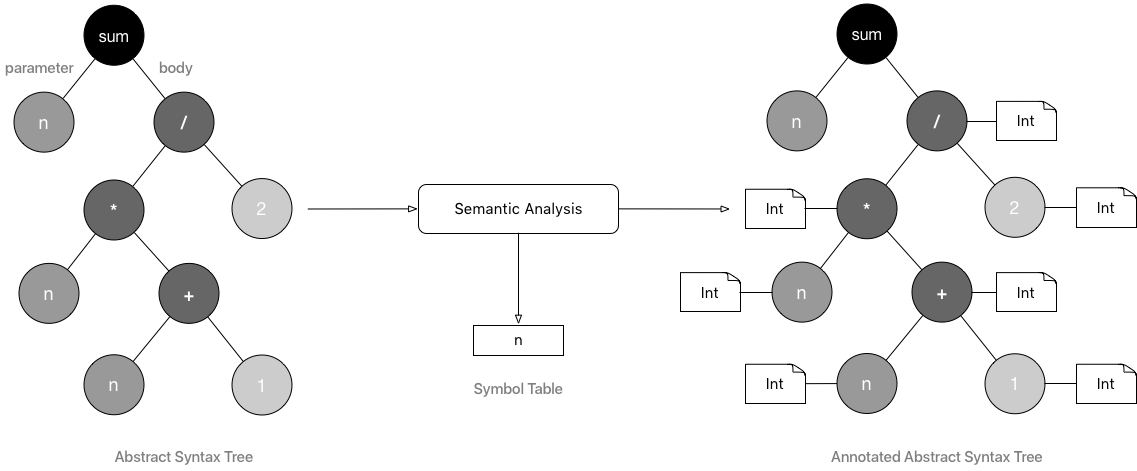
Intermediate Code Generation
After the semantic analysis phase, the compiler uses the annotated AST to generate an intermediate and machine-independent low-level code. One such intermediate representation is the three-address code.
The three-address code (3AC), in its simplest form, is a language in which an instruction is an assignment and has at most 3 operands.
Most instructions in 3AC are of the form a := b <operator> c or a := b.
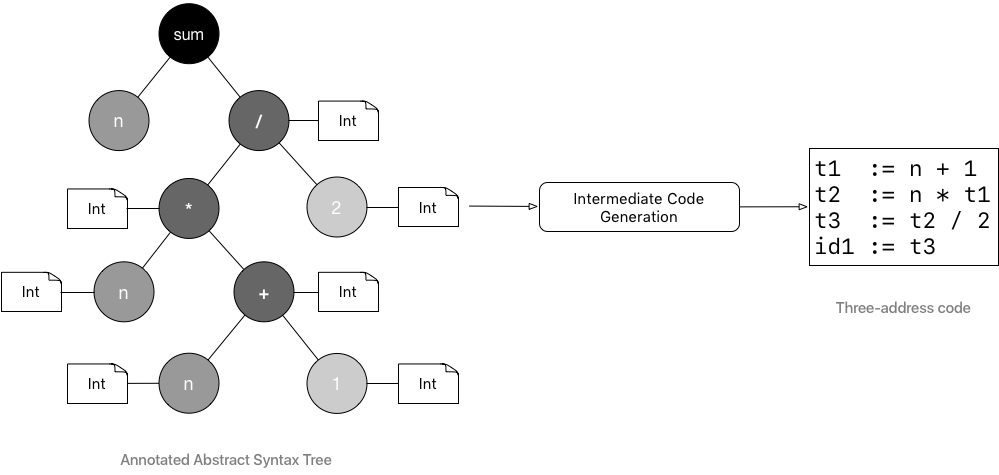
The above drawing depicts a 3AC code generated from an annotated AST created during the compilation of the function
func sum(n: Int): Int = { n * (n + 1) / 2}
The intermediate code generation concludes the front end phase of the compiler.
Optimization
In the optimization phase, the first phase of the back end, the compiler uses different optimization techniques to improve on the intermediate code generated by making the code faster or shorter for example.
For example, a very simple optimization on the 3AC code in the previous example would be to eliminate the temporary assignment t3 := t2 / 2 and directly assign to id1 the value t2 / 2.

Code Generation
In this last phase, the compiler translates the optimized intermediate code into machine-dependent code, Assembly or any other target low-level language.

Compiler vs. Interpreter
Let?s conclude this article with a note about the difference between compilers and interpreters.
Interpreters and compilers are very similar in structure. The main difference is that an interpreter directly executes the instructions in the source programming language while a compiler translates those instructions into efficient machine code.
An interpreter will typically generate an efficient intermediate representation and immediately evaluate it. Depending on the interpreter, the intermediate representation can be an AST, an annotated AST or a machine-independent low-level representation such as the three-address code.
What?s next?
Head to the next article in which we will look at lexical analysis in depth and review all the concepts necessary to build a lexical analyzer for Blink. You will also get your hands dirty by completing your first challenge.
You?ve reached the end. ?
Hacker Noon is how hackers start their afternoons. We?re a part of the @AMI family. We are now accepting submissions and happy to discuss advertising & sponsorship opportunities.
If you enjoyed this story, we recommend reading our latest tech stories and trending tech stories. Until next time, don?t take the realities of the world for granted!
